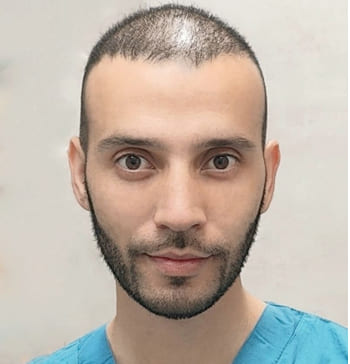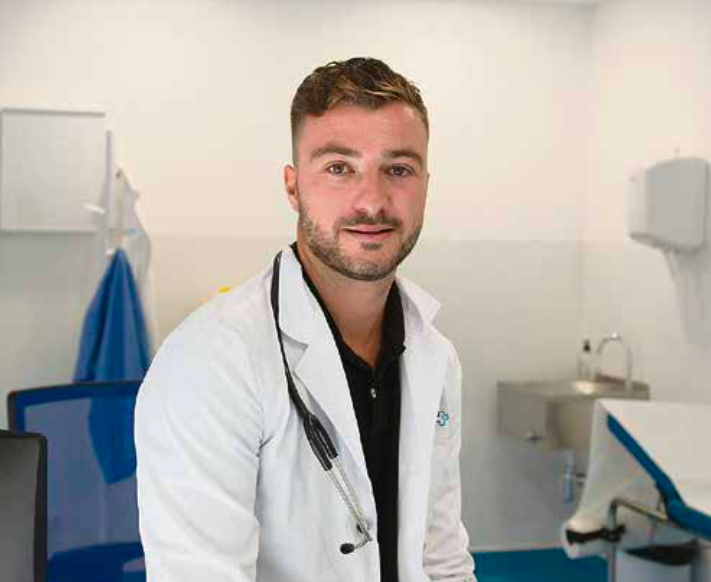
Veinfibro 0,2 % solucion inyectable
Спросите врача о рецепте на Veinfibro 0,2 % solucion inyectable

Инструкция по применению Veinfibro 0,2 % solucion inyectable
Introduction
Label: Information for the User
Veinfibro 0.2% injectable solution
Tetradecylsodium sulfate
Read this label carefully before starting to use this medication because it contains important information for you.
- Keep this label, as you may need to read it again.
- If you have any questions, consult your doctor, pharmacist, or nurse.
- This medication has been prescribed only for you and should not be given to others, even if they have the same symptoms as you, as it may harm them.
- If you experience any adverse effects, consult your doctor, pharmacist, or nurse, even if they are not listed in this label. See section 4.
1. What is Veinfibro and what is it used for
Veinfibro is a medication that contains sodium tetradecyl sulfate.
Veinfibro is used for the treatment of varicose veins, large, medium, or small venules, and vascular spider veins.
Veinfibro belongs to a group of medications called sclerosants. Sclerosants are chemical agents that, when injected into the affected vein, cause the vein wall to become inflamed and the walls to adhere. This stops blood flow and the vein becomes scar tissue. In a few weeks, the vein should disappear.
Veinfibro is for use only in adults (including the elderly).
2. What you need to know before starting to use Veinfibro
Do not use Veinfibro if you:
- are allergic to tetradecilsulfate sodium or any of the other components of this medication (listed in section 6) or have an allergic disease.
- cannot walk for any reason or are bedridden.
- are at risk of developing blood clots in the veins due to:
- hereditary blood disorders such as thrombophilia
- hormonal or hormone replacement therapy
- significant overweight
- smoking
- long-term immobilization
- have recently had blood clots in superficial or deep veins or in the lungs
- have recently been operated on
- have varicose veins (varices) caused by pelvic or abdominal tumors, unless the tumor has been removed
- have uncontrolled diseases such as diabetes, hyperthyroidism, asthma, blood abnormalities, blood infection, or recent respiratory or skin problems
- have swelling or a red area of skin that is hot or sensitive (cellulitis)
- have any type of infection
- have evolving cancer
- have been told you have problems with the closure of deep vein valves (valvular incompetence)
- have any blocked arteries
- have severe inflammation of the veins in the legs (acute phlebitis)
- have symptoms of congenital heart disease (only if the sclerosant is used as foam)
Warnings and precautions
Consult your doctor or nurse before starting to use Veinfibro if:
- you are allergic to any food or medication or have other allergies. You must inform your doctor, as a test dose is necessary 24 hours before administering a larger dose later.
- you have a history of blood clots in superficial or deep veins or in the lungs
- you have an asymptomatic hole in the heart (if the sclerosant is used in foam form)
- you have a symptomatic or asymptomatic hole in the heart (if the sclerosant is used in liquid form)
- you suffer from migraines
- you have leg vein problems associated with a prolonged disease that causes inflammation of body tissues (lymphedema). Veinfibro may worsen local pain and inflammation for a few days or several weeks.
- you have a history of pulmonary hypertension
- you have a history of transient ischemic attack (TIA), stroke, or severe cerebral vascular accident
- you have been told you have any disease in the arteries or veins (arteriosclerosis)
- you have severe inflammation and clots in the arteries and veins that affect your hands and feet (Buerger's disease)
- you have controlled respiratory difficulties (asthma)
Veinfibro should be administered by experienced healthcare professionals familiar with the appropriate injection technique. Before using this injection, you may need to undergo tests to see if you have any problems with the closure of valves in your veins.
Your doctor will ask you questions about your health and inform you about the possible side effects of this procedure.
During treatment
Your doctor will monitor you during and after sclerotherapy for signs of hypersensitivity (redness, itching, coughing) or neurological symptoms (visual disturbances, migraines, tingling, numbness).
He will ask you to return for a follow-up visit.
Children and adolescents
The safety and effectiveness of Veinfibro have not been established in children or adolescents.
Other medications and Veinfibro
If you are taking hormonal contraceptives (the pill) or hormone replacement therapy, you may be at risk of developing blood clots in the veins (see “Do not use Veinfibro if you”). You must inform your doctor or nurse.
Inform your doctor or nurse if you are taking or have recently taken any other medication, including those obtained without a prescription.
Pregnancy and breastfeeding
You must inform your doctor if:
- you are pregnant or think you may be pregnant
- you plan to become pregnant
- you are breastfeeding
There is no adequate information on the use of Veinfibro in pregnant women. Veinfibro should not be used during pregnancy unless it is clearly necessary. Your doctor will decide if this treatment is appropriate for you or not.
It is not known if Veinfibro is excreted in breast milk. If you are breastfeeding, your doctor will decide if Veinfibro can be used.
Driving and using machines
After treatment with this injection, you may be advised to wear a bandage and/or compression stockings to help reduce inflammation and skin pigmentation, which may affect your ability to drive.
Veinfibro contains sodium and potassium
This medication contains:
- less than 1 mmol of sodium (23 mg) per vial or ampoule, that is, essentially “sodium-free”.
- less than 1 mmol of potassium (39 mg) per vial or ampoule, that is, essentially “potassium-free”.
3. How to Use Veinfibro
Do Not Attemptto Self-Inject Veinfibro. You Must Be Treated by an Experienced Doctor Familiar with the Injection Technique.
The Therapy Involves Injecting the Medication into the Affected Vein Using the Smallest Possible Needles and Should Be Injected Slowly and with Extreme Care to Expel the Contents of These Veins.
The Medication Can Be Manually Mixed with Air Using Two Syringes and a Connector to Create Foam That Helps to Expel Blood from Larger Veins.
Your Doctor Should Be Guided by Ultrasound Technique in Treating Invisible Varicose Veins to Administer the Sclerosant in Foam.
Your Doctor Will Decide on the Areas to Treat and the Correct Dose for You.
Adults and Seniors
The Dose Varies Between 0.1 and 2 ml per Injection. A Maximum of 10 ml of the Three Lower Concentration Injections Can Be Used, However, No More Than 4 ml Is Used When the Higher Concentration Injection Is Used.
Due to the Limited Volume of Authorized Sclerosant, Multiple Sessions of Sclerotherapy May Be Necessary.
After Being Treated with Veinfibro, You Should Follow Your Doctor's Advice. They May Recommend Wearing a Bandage or Compression Stockings to Help Reduce Inflammation and Skin Pigmentation.
If You HaveAny Doubts About the Use of This Medication, Consult Your Doctor, Pharmacist, or Nurse.
4. Possible Adverse Effects
Like all medicines, this medicine can cause side effects, although not everyone will experience them.
You may experience severe side effects. Stop taking Veinfibro and seek immediate medical attention or go to the emergency department of a hospital if you have the following:
Rare (may affect up to 1 in 100 patients):
- Deep vein thrombosis (possibly due to an underlying disease). Symptoms may include pain, inflammation, sensitivity in one leg (usually the calf), intense pain in the affected area, warm skin in the area of the clot, or red skin, especially on the back of the leg below the knee.
Very rare (may affect up to 1 in 1,000 patients):
- Local tissue death of the skin and, less commonly, of the nerves. Symptoms include pain, skin discoloration (redness), inflammation, or fluid accumulation, blisters (which may be filled with clear fluid or blood), skin turning dark red, purple, or black, abnormal sensations (tingling, stinging, burning), numbness, or loss of sensation.
Extremely rare (may affect up to 1 in 10,000 patients):
- Severe allergic reaction (anaphylactic shock), which can cause difficulty breathing or a sudden drop in blood pressure, making you feel dizzy or lose consciousness. It is very rare, but it must be treated immediately, as it can be fatal.
- Blockage of an artery due to a clot, which can cause:
- Stroke or interruption of blood supply to the brain or eye (transient ischemic attack). Symptoms may include weakness, numbness, paralysis in the face, arm, or leg, usually on one side of the body, slurred or incomprehensible speech, or difficulty understanding others, blindness in one or two eyes, or double vision.Symptoms may include sudden difficulty breathing, a sudden and severe chest pain that worsens with deep breathing or coughing, rapid heart rate, or rapid breathing.
To avoid this severe and very rare event, do not administer this medication to patients at high risk of forming clots in veins and arteries (thrombosis risk).
- Circulatory insufficiency. Symptoms may include fatigue, loss of consciousness, fainting, chest pain, difficulty breathing, weakness, dizziness, vomiting, and palpitations.
- Tissue death after an intra-arterial injection. Symptoms may vary depending on the amount of medication injected and the speed of medical attention received. Symptoms may include pain without long-term damage, to loss of large areas of tissue, including the foot, resulting in amputation.
Other side effects that may be experienced are:
Very common (may affect more than 1 in 10 patients):
- Superficial vein inflammation
Common (may affect up to 1 in 10 patients):
- Pain or burning (short-term at the injection site)
- Skin discoloration
- Very fine vascular spider growths in the treated area (capillarization)
Rare (may affect up to 1 in 100 patients):
- Local allergic and non-allergic skin reactions, such as redness, itching, rashes, skin inflammation
- Visual disturbances
- Migraine
Very rare (may affect up to 1 in 1,000 patients):
- Cough, difficulty breathing, sensation of pressure, oppression in the chest
- Itching, prickling, tingling, or burning sensation of the skin
- Headache, and sensation of fainting
- Confusion, dizziness, and loss of consciousness
Extremely rare (may affect up to 1 in 10,000 patients):
- Fever, hot flashes, itching, and skin redness (urticaria)
- Nausea, vomiting, diarrhea, sensation of inflammation in the tongue, dry mouth
- Vascular inflammation.
Reporting of side effects
If you experience any type of side effect, consult your doctor, pharmacist, or nurse, even if it is a possible side effect that does not appear in this prospectus. You can also report them directly through the Spanish System for Pharmacovigilance of Medicines for Human Use: https://www.notificaram.es. By reporting side effects, you can contribute to providing more information on the safety of this medicine.
5. Veinfibro Storage
Keep this medication out of the sight and reach of children.
- This medication does not require any special storage temperature.
- Do not freeze.
- Store the container in the outer packaging to protect it from light.
- Do not use this medication after the expiration date that appears on the label or carton box. The expiration date is the last day of the month indicated.
For single use only. Once the container is opened, the contents must be used immediately. Dispose of any unused portion of the product.
Medications should not be thrown down the drain or in the trash. Depositthe containers and medications that you no longer need at the SIGRE collection pointat the pharmacy. If in doubt, ask your pharmacist how to dispose of the containers of medications that you no longer need. By doing so, you will help protect the environment.
6. Contents of the packaging and additional information
The active principle is sodium tetradecyl sulfate.
Veinfibro 0.2%
Each milliliter of injectable solution contains 2 mg of sodium tetradecyl sulfate.
Each vial of 5 ml contains 10 mg of sodium tetradecyl sulfate.
The other components are: benzyl alcohol (20 mg/ml), disodium dodecahydrate phosphate, potassium dihydrogen phosphate, water for injectable preparations, sodium hydroxide (for pH adjustment). See section 2, "Veinfibro contains sodium and potassium."
Appearance of Veinfibro and packaging contents
This medication is presented as a transparent, colorless, sterile, and particle-free injectable solution in glass vials or ampoules.
The solution is transparent, colorless, sterile, and free of visible particles.
Packaging of 2, 5, and 10 vials of 5 ml
Only some package sizes may be marketed.
Marketing authorization holder:
STD Pharmaceutical (Ireland) Limited,
Block 1, Blanchardstown Corporate Park,
Ballycoolen Road, Blanchardstown,
Dublin 15, D15 AKK1, Ireland
Manufacturer responsible:
Medipha Sante
Les Fjords-Immeuble Oslo
19 Avenue de Norvege
91953 Courtaboeuf CEDEX
France
Or
Chemische Fabrik Kreussler & Co. GmbH?
Rheingaustrasse 87-93?
65203 Wiesbaden,
Germany
You can request more informationabout this medication by contacting the local representative of the marketing authorization holder:
Local representative:
Logsa Endomedical S.L.
C/ Escritora Carmen Martín Gaite, 2, local 2
29196 Málaga. Spain
This medication is authorized in EEA member states under the following names:
Bulgaria, Croatia, Czech Republic, France,
Netherlands, Poland, Portugal, Romania,
Slovenia, United KingdomFibrovein
Austria, SpainVeinfibro
Last review date of this leaflet: 08/2021
The following information is intended solely for healthcare professionals
Veinfibro 0.2% injectable solution
For more information, see the Technical Dossier
Dosage and administration
Dosage
Veinfibro should be administered only by intravenous route. The required concentration will depend on the size and degree of varicose veins. Spider veins should be treated with the 0.2% solution, and reticular veins with the 0.5% solution. The 1% solution is more useful for small or medium-sized varices, and the 3% solution for large varices. The size of the invisible varices should be measured by ultrasound.
The sclerosant should be administered by intravenous route in small aliquots in multiple points along the vein to be treated, either as a liquid or as a mixture of sclerosant/air (foam) as detailed in the table below. The goal is to achieve optimal destruction of the vessel wall with the minimum concentration of sclerosant necessary for a clinical outcome. If the concentration is too high, necrosis or other adverse sequelae may occur.
Adults
Concentration | Normal volume injected intravenously in the correct place per session | Maximum total volume injected per session |
Liquid | Liquid | |
Veinfibro 0.2% | 0.1 to 1 ml | 10 ml |
When special precautions are required (see Technical Dossier), it is recommended to administer a test dose of 0.25 to 0.5 ml of Veinfibro and observe the patient for several hours before administering a second dose or a larger dose.
Since the volume to be injected is limited per session, multiple sessions (2 to 4 on average) may be necessary. To prevent possible allergic reactions, it is recommended to give a small test dose of Veinfibro at the beginning of each session.
For spider veins, the smallest needles (e.g., caliber 30) should be used to perform the injection, which should be administered slowly to expel the blood from these veins. In the treatment of spider veins, an air block technique may be used.
Geriatric population
No specific dosage recommendations are applicable.
Pediatric population
No safety or efficacy data are available for Veinfibro in children and adolescents.
Administration method
Aseptic technique should be strictly maintained during the handling of Veinfibro. Veinfibro is a single-use parenteral medication. Once the packaging is opened, use immediately and discard any unused portion.
Visually inspect before use that there are no visible particles. Solutions containing visible particles should not be used.
When the sclerosant is administered as foam, it should be administered ideally guided by ultrasound technique. It should be administered by a doctor trained in the correct generation and administration of foam.
Incompatibilities
This medication is incompatible with heparin.
Without compatibility studies, this medication should not be mixed with other medications.
Special warnings and precautions
Veinfibro should be administered only by a healthcare professional experienced in venous anatomy and in the diagnosis and treatment of diseases affecting the venous system and familiar with correct injection technique.
Severe allergic reactions, including anaphylaxis, have been reported, and the doctor should be prepared to treat them appropriately. Emergency resuscitation equipment should be available. As a precaution, the patient should be treated in a hospital.
Severe local adverse effects, including tissue necrosis, may occur after extravasation, so extreme care should be taken in the intravenous placement of the needle, and the use of the minimum effective volume at each injection site is essential. The solution should be injected slowly.
Care should be taken not to inject the solution into an artery, as this could cause tissue death (necrosis) and potentially lead to limb death.
Care should be taken when injecting in the foot and the area above and below the ankle (maleolar area) due to the risk to one of the arteries. Compression should be applied when treating small veins, as pigmentation may occur if the blood is expelled in the injection area.
Excipients
This medication contains:
•Less than 1 mmol of sodium (23 mg) per vial/ampoule, i.e., essentially "sodium-free".
•Less than 1 mmol of potassium (39 mg) per vial/ampoule, i.e., essentially "potassium-free".
- Страна регистрации
- Активное вещество
- Требуется рецептДа
- Производитель
- Информация носит справочный характер и не является медицинской рекомендацией. Перед приемом любых препаратов проконсультируйтесь с врачом. Oladoctor не несет ответственности за медицинские решения, принятые на основе этого контента.
- Аналоги Veinfibro 0,2 % solucion inyectableФорма выпуска: ИНЪЕКЦИОННЫЙ РАСТВОР, 0.5%Активное вещество: sodium tetradecyl sulfateПроизводитель: Std Pharmaceutical (Ireland) LimitedТребуется рецептФорма выпуска: ИНЪЕКЦИОННЫЙ РАСТВОР, 1%Активное вещество: sodium tetradecyl sulfateПроизводитель: Std Pharmaceutical (Ireland) LimitedТребуется рецептФорма выпуска: ИНЪЕКЦИОННЫЙ РАСТВОР, 3%Активное вещество: sodium tetradecyl sulfateПроизводитель: Std Pharmaceutical (Ireland) LimitedТребуется рецепт
Аналоги Veinfibro 0,2 % solucion inyectable в других странах
Лучшие аналоги с тем же действующим веществом и терапевтическим эффектом.
Аналог Veinfibro 0,2 % solucion inyectable в Polonia
Врачи онлайн по Veinfibro 0,2 % solucion inyectable
Консультация по дозировке, побочным эффектам, взаимодействиям, противопоказаниям и продлению рецепта на Veinfibro 0,2 % solucion inyectable – по решению врача и с учетом местных правил.














